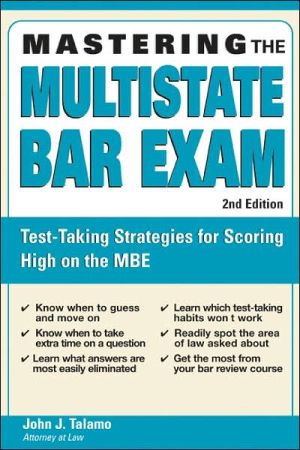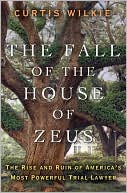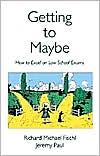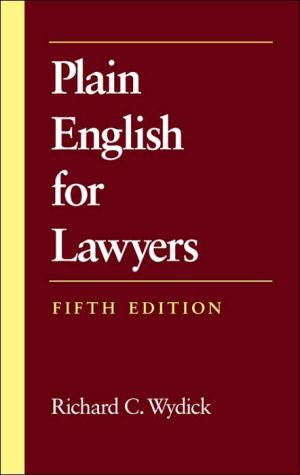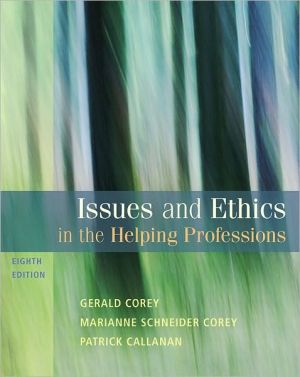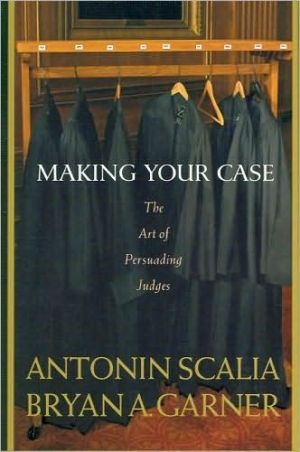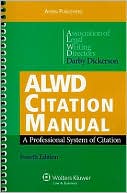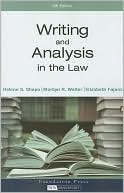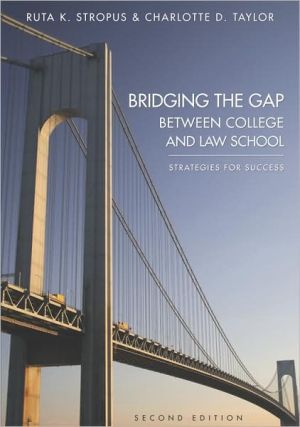Mastering the Multistate Bar Exam, 2E
This title addresses the age-old problem for law students: I know the information, but how do I prove it on the test? The MBE is comprised of 200 multiple choice questions and takes the typical law student a minimum of six hours to complete. The test is one of three teasts all law students must pass in order to be licensed to practice. While there are tried and true methods reviewed in law schools practicing skills needed in essay writing for school and exams, there are no techniques or...
Search in google:
This book is designed to help law students become efficient and skilled at answering the type of multiple-choice questions that they will encounter on this exam. Its purpose is to help law students in developing test-taking techniques.
Analyzing Examples from the MultiState Bar Exam\ Excerpted from Mastering the MultiState Bar Exam by John J. Talamo, Attorney at Law © 2007\ You have probably never taken a multiple-choice test like the Multistate Bar Exam. You have, of course, taken multiple-choice tests. The first thing you must realize is that if you try to answer the Multistate questions the way you answered other multiple-choice questions, you are not going to do well. The following section will tell you how to answer Multistate questions.\ FAMILIAR QUESTIONS There are different types of multiple-choice questions. For the first type, you must know a fact. This is the kind that you are used to seeing.\ EXAMPLE:\ The battle of Hastings was fought in:\ (a) 1066\ (b) 1166\ (c) 1266\ (d) 1366\ This is the type of question where you either know the answer or you don't. (The correct answer is (a).)You cannot figure it out and you would never think that more than one choice is correct.\ Compare that to the following example, in which you might be able to figure out the answer.\ EXAMPLE:\ The leader of the French invasion of Russia in the war of 1812 was:\ (a) Louis XIV\ (b) Louis XV\ (c) Louis XVI\ (d) Napoleon\ You may not know the answer but you certainly know the question being asked. Could you figure out the answer? Possibly. Suppose you know that Louis XVI was beheaded in 1793, following the revolution of 1789.You could reasonably guess that Louis' XIV and XV preceded Louis XVI. You also know that 1793 comes before 1812. This line of reasoning would eliminate all but Napoleon.\ BAR EXAM QUESTIONS There are some questions on the Multistate that are as easy as the above examples. You know exactly what they are asking and you either know the answer or you don't. If most of the questions followed this pattern, you could study strictly from your outlines and do well. Unfortunately, most are not. The estimate by most bar reviewers is that about 20% of the questions can be answered with your law school knowledge. Another 20% are so difficult that few can answer them. The remaining 60% separate those who pass and fail. These are the questions that require knowledge of the law and the test.\ Let's look at this type of multiple-choice question-the type most common on the test.\ EXAMPLE:\ Don is driving his car on Main Street when he begins to get sleepy. He decides to close his eyes for a few minutes. Because he cannot see, he drives his car onto the sidewalk, hitting and injuring Paul. Paul was sitting on a bench waiting for a bus. Paul sues Don on the theory of negligence.\ Paul will:\ (a) Win.\ (b) Win, if Paul can prove that he was not contributorily negligent.\ (c) Lose, because Paul should have known that this area was dangerous, and therefore, assumed the risk of being injured by Don.\ (d) Win, because Don's act caused Paul's injury.\ ANALYSIS This is a very easy question. It's even easier if you approach it properly. The first thing you must ask yourself is, "What is the question asking?"\ This is a Torts question. How do you approach a Torts question? First, you determine if the Plaintiff's case proves every required element of the Tort. If not, you stop. The Plaintiff loses. If every element is there, does the Defendant have any acceptable defenses? If yes, the Defendant wins. If no, the Plaintiff wins.\ We can rephrase the question to see that it is really asking if all of the elements of Negligence are given in the facts or if a choice will supply a missing element. Since no defenses are presented in the facts, are there any valid defenses in the choices?\ Negligence requires duty, breach of duty, causation, and damages. All are obviously contained in the given facts. There is no question as to whether Don owes a duty to Paul. Even though the question does not say that Don breached that duty, you know that deliberately closing your eyes while driving constitutes a "failure to use reasonable care." The facts state that the breach of duty (driving with his eyes closed) was the cause of Paul's injuries. Are there defenses? Let's examine the choices, starting with (b).\ (b) Contributory Negligence is a possible defense. The choice is wrong for two reasons. First, it is not supported by the facts. There is nothing given to indicate any negligence on the part of Paul. However, that is not the only reason you dismiss this choice. The choice asks the Plaintiff to prove that he was not contributorily negligent. Plaintiffs don't prove a lack of a defense-defendants prove defenses. Plaintiffs respond to defenses. No defense has been raised in the facts or the choice.\ This is a common type of choice. The examiners don't give you choices that are close to correct. If choice (b) read "Unless Paul was contributorily negligent," the choice would be a correct statement of law. Even though it would not be supported by the facts, it would not directly be contradicted by the facts.\ They don't make it that difficult. Every question that requires one choice to be correct will have a definite reason why the other choices are wrong. A lot of thought goes into these questions. The last thing the examiners want is to be accused of asking ambiguous questions.\ (c) Assumption of Risk is a possible defense but is simply not supported by the facts. This defense requires knowledge of the risk and a decision to take the risk. It's too much of a stretch for any reasonable person to make.\ That's not the only reason why it's wrong. It's wrong because it says that Paul "should have known" of the danger. Is the test for Assumption of Risk that the plaintiff should have known of the danger or knew of the danger? "Should have known" would mean Negligence, not Assumption of Risk. Again, you have two reasons to eliminate a choice.\ (d) This choice is where you have to determine what this question is really asking. It's true that the Plaintiff must prove causation as part of a successful suit based on Negligence. The problem is that the Plaintiff must prove all four elements, not just causation. Paul will win, not because Don's act caused his injuries, but because Don breached his duty to Paul and the breach of duty caused Paul's injuries. In other words, Don's negligent act caused Paul's injuries. The reason that this distinction is important is that in a slightly different question, based on a strict liability theory, (d) might be the correct answer. This is because breach of duty is not a required element for strict liability.\ In this question, all of the necessary elements are contained in the facts, and (a) is the correct choice. This was a relatively easy question and you probably would have answered it correctly without much analysis. The point is to illustrate how much easier a question can be if you first determine what they are really asking. This analysis will be necessary for more difficult questions. Another bit of knowledge you gained from this question is that a simple answer is sometimes correct.\ AUTHOR'S ADVICE Don't dismiss the one-word answer as being too simple and, therefore, probably wrong. Of course, some of the one-word answers are wrong, but the reason they're wrong is because they don't answer the question, not because they have only one word.\ IMPORTANT CHANGES IN THE FACTS Let's change the facts slightly and see how the choices are affected.\ EXAMPLE:\ Don is driving down Main Street when his car veers onto the sidewalk, hitting and injuring Paul who is on the bench waiting for the bus. Paul sues on a Negligence theory. Paul will:\ (a) Win.\ (b) Win, if he can prove that Don was not driving with reasonable care.\ (c) Win, because Don caused Paul's injuries.\ (d) Lose, because Paul was not within the zone of risk.\ Choice (d) can be easily dismissed. Many questions contain at least one throwaway choice, and even usually come down to a decision between two of the choices. Choice (c) is still incomplete. Causation is not disputed. It's just not enough for the Negligence theory. Choice (a) is now incomplete. The facts do not give us breach of duty, a necessary element of Negligence. Never add facts or say to yourself, "What if?"\ Choice (b) is now the correct choice. It supplies the missing element.\ This is, again, an easy question if you paid close attention to the facts. It simply illustrates how the correct choice can change by slightly altering the facts. Reading every word is obviously very important.\ By now you should be getting some idea of the challenge you face. There will be many choices that, to the untrained eye, appear to be correct. Many times the reason is that they contain legal points that jog your memory.\ In law school you studied both Contributory Negligence and Assumption of Risk-you never studied "win" (the correct answer in the first example). Since you are trying to relate the choice to your studies, you could pick the wrong choice because you lack the confidence to choose the unfamiliar. This is why studying outlines alone does not work. Once you study the test as well as the law, your increased confidence will allow you to pick the correct choice, familiar or not.\ STEPS TO SUCCESS
About the Book VIIThe Bar Exam 1Essay and PerformanceMBETime FactorThe SubjectsThe Format of QuestionsScoring the TestThe Bar Review 11RelevanceCommitmentBar Reviews and StrategiesRecordingsTimersMultiple-Choice Questions 19Familiar QuestionsBar Exam QuestionsTechniques 27Reading the QuestionMarking Your AnswerHow to Study for the Multistate Exam 31GoalsLearning the Wrong AnswerTen QuestionsTwenty QuestionsThe DialogueFirst ImpressionsSkipping QuestionsWarm-UpSpecial Exercises 51The Essay ApproachThe Teaching ApproachImproving Yourself 59Speed-ReadingThe Multistate Subjects 63TortsCriminal LawCriminal ProcedureContractsConstitutional LawEvidenceReal PropertyEssays 87Your Essay ExamWriting an EssayCautionSummary IllustrationPerformance 99The QuestionThe AnswerTime and StudyThe Pressure 107Getting to the ExamMealsWarm-UpMaterialsGeneral AdvicePutting It All Together 113A Final WordThe Multistate Professional Responsibility Exam (MPRE) 117Examples 119Constitutional LawContractsCriminal LawCriminalProcedureEvidenceReal PropertyTortsState Exam Requirements 141Index 147
